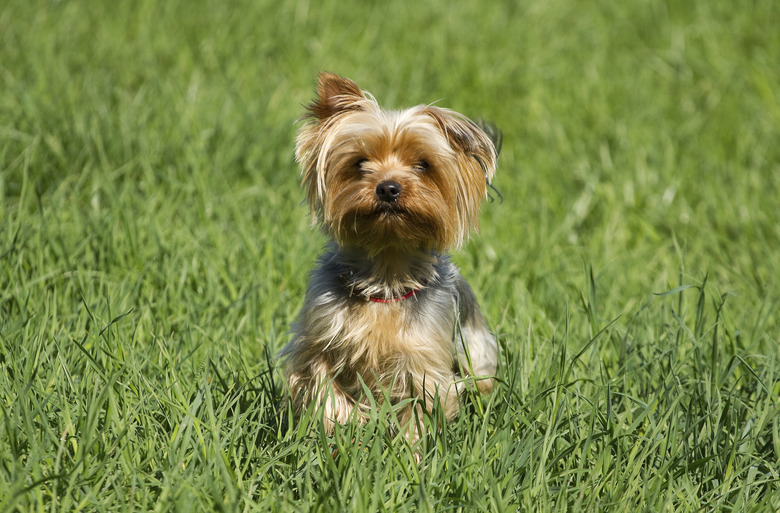The 4 Best Grasses For Dogs
We may receive a commission on purchases made from links.
Maintaining a green lawn can be a challenge if it's also a combination potty and playground for your dog (or the neighborhood dogs). Unless you're willing to install artificial turf, your grass may develop brown patches from doggy urine damage or worn areas from Fido's playtime. If you love dogs and a green and luxurious lawn, look to grass types that are more tolerant of your dog's natural behaviors. Here are the best grasses for dogs — and tips on how to prevent damage to your grass in the future.
The Best Grass for Dogs
The Best Grass for Dogs
- Bermuda Grass and Kentucky bluegrass: Bermuda grass (Cynodon dactylon) is a perennial in U.S. Department of Agriculture plant hardiness zones 7 through 10. For warm-season areas, Bermuda grass is the best choice for planting in dog high-traffic areas, and Kentucky bluegrass (Poa pratensis), a perennial in USDA zones 3 through 7, holds up better in cool-season areas.
- Bahia and Zoysia: Bahia (Paspalum notatum) grows in USDA zones 7 through 11. Zoysia grass (Zoysia spp.) is hardy in USDA zones 5 through 10. Of these grasses, Bermuda grass is denser, which means it fills in faster after urine burns. Zoysia grass takes more time to establish, typically two to four years, but zoysia is a suitable choice for high-traffic areas after its establishment.
Tip
If your dog is particularly active or patrols a certain area in your yard, no one grass type can hold up under consistent pacing.
No Grass Is Completely Dog-Resistant
No Grass Is Completely Dog-Resistant
It's important to bear in mind that no turf grass type is 100 percent resistant to dog damage: If Fido is too much a creature of habit, your turf will inevitably pay the price. However some types of grass have a quicker recovery rate than others, and grow more quickly to fill in dead spots.
Grasses that naturally spread by stolons or rhizomes, which are modified stems that grow along the ground, are typically more tolerant because they rebound quicker from damage. Choosing a grass that's hardy and resilient in your climate is a good starting point. But you'll also need to consider (and adapt for) your dog's habits.
How Dog Urine Kills Grass
How Dog Urine Kills Grass
A common misconception is that the pH of dog urine is responsible for killing grass. However, it's actually the urea found in the urine that is the culprit. It contains nitrogen and soluble salts. The damage it causes looks similar to applying too much high-nitrogen fertilizer — it burns the grass, killing it and turning it brown.
If you accompany your leashed dog outside for potty breaks, you can help mitigate urine damage by taking a watering can with you. As soon as the dog relieves itself, pour water on the urine-soaked grass to dilute the urine so it won't burn the grass. Another habit to modify, if you can, is your pooch's play area.
But, it's important to note that it's not just dog urine that kills grass — it can also be the dog's level of activity. When dogs run back and forth across the same swath of grass, it creates wear patterns that compact your soil and kill turf over time. These high-traffic areas create larger patches of dead turf than urine spots.
